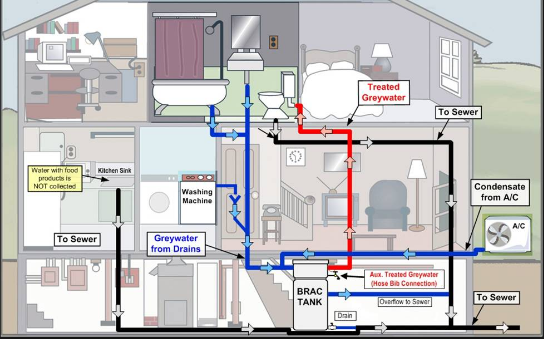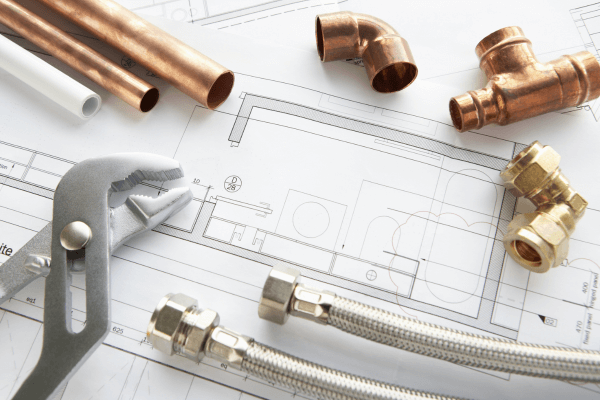An Overview to Your Home's Plumbing System Anatomy
An Overview to Your Home's Plumbing System Anatomy
Blog Article
How do you feel in relation to Anatomy of a House: Understanding the Components?

Understanding exactly how your home's pipes system works is vital for every single home owner. From delivering tidy water for alcohol consumption, food preparation, and showering to securely getting rid of wastewater, a well-maintained plumbing system is essential for your family's health and wellness and convenience. In this detailed guide, we'll check out the complex network that composes your home's pipes and offer suggestions on maintenance, upgrades, and managing common issues.
Introduction
Your home's pipes system is greater than simply a network of pipes; it's a complicated system that guarantees you have accessibility to tidy water and efficient wastewater removal. Understanding its elements and just how they collaborate can aid you protect against costly repair work and make sure whatever runs smoothly.
Fundamental Elements of a Pipes System
Pipelines and Tubing
At the heart of your plumbing system are the pipes and tubing that bring water throughout your home. These can be made from different products such as copper, PVC, or PEX, each with its advantages in terms of sturdiness and cost-effectiveness.
Components: Sinks, Toilets, Showers, and so on.
Fixtures like sinks, toilets, showers, and tubs are where water is utilized in your house. Comprehending exactly how these components attach to the plumbing system assists in identifying issues and intending upgrades.
Shutoffs and Shut-off Factors
Shutoffs regulate the circulation of water in your pipes system. Shut-off valves are important during emergencies or when you need to make repair work, enabling you to isolate parts of the system without disrupting water flow to the whole residence.
Water System
Main Water Line
The main water line connects your home to the municipal water or an exclusive well. It's where water enters your home and is dispersed to various components.
Water Meter and Stress Regulatory Authority
The water meter procedures your water usage, while a pressure regulator ensures that water moves at a secure pressure throughout your home's pipes system, protecting against damages to pipes and fixtures.
Cold Water vs. Hot Water Lines
Recognizing the difference between cold water lines, which provide water directly from the main, and warm water lines, which lug warmed water from the water heater, helps in repairing and preparing for upgrades.
Drainage System
Drain Piping and Traps
Drain pipelines carry wastewater away from sinks, showers, and commodes to the drain or septic tank. Traps protect against sewage system gases from entering your home and also trap debris that could create obstructions.
Air flow Pipelines
Ventilation pipes allow air right into the water drainage system, protecting against suction that can slow down drain and create catches to vacant. Appropriate ventilation is important for maintaining the honesty of your pipes system.
Value of Correct Water Drainage
Making sure proper water drainage protects against back-ups and water damage. Regularly cleansing drains and maintaining catches can stop costly repairs and expand the life of your plumbing system.
Water Heating Unit
Sorts Of Water Heaters
Water heaters can be tankless or typical tank-style. Tankless heating units warm water on demand, while storage tanks store heated water for instant usage.
Upgrading Your Pipes System
Reasons for Updating
Upgrading to water-efficient fixtures or changing old pipes can boost water quality, reduce water expenses, and increase the value of your home.
Modern Pipes Technologies and Their Benefits
Check out technologies like clever leak detectors, water-saving bathrooms, and energy-efficient hot water heater that can save cash and reduce environmental influence.
Cost Factors To Consider and ROI
Calculate the in advance prices versus long-term cost savings when taking into consideration plumbing upgrades. Lots of upgrades spend for themselves via reduced utility costs and fewer repair work.
Exactly How Water Heaters Attach to the Plumbing System
Comprehending just how water heaters attach to both the cold water supply and hot water distribution lines assists in detecting issues like not enough hot water or leaks.
Upkeep Tips for Water Heaters
On a regular basis flushing your hot water heater to get rid of debris, checking the temperature settings, and inspecting for leaks can prolong its life expectancy and boost energy effectiveness.
Usual Plumbing Problems
Leakages and Their Causes
Leaks can happen as a result of aging pipelines, loosened fittings, or high water stress. Dealing with leakages without delay prevents water damage and mold and mildew development.
Obstructions and Blockages
Blockages in drains pipes and toilets are typically brought on by flushing non-flushable products or an accumulation of grease and hair. Utilizing drain screens and bearing in mind what goes down your drains can stop obstructions.
Signs of Plumbing Problems to Watch For
Low water pressure, sluggish drains pipes, foul odors, or abnormally high water costs are signs of potential plumbing issues that must be resolved immediately.
Plumbing Upkeep Tips
Routine Evaluations and Checks
Schedule annual plumbing assessments to capture problems early. Try to find indicators of leakages, rust, or mineral buildup in faucets and showerheads.
Do It Yourself Upkeep Tasks
Easy tasks like cleansing tap aerators, checking for toilet leakages utilizing dye tablets, or insulating exposed pipelines in cold climates can protect against major plumbing problems.
When to Call an Expert Plumber
Know when a pipes concern calls for expert proficiency. Attempting complicated repair services without correct expertise can bring about even more damages and greater repair service expenses.
Tips for Lowering Water Use
Basic routines like taking care of leaks promptly, taking much shorter showers, and running full lots of laundry and dishes can save water and lower your energy costs.
Eco-Friendly Plumbing Options
Consider lasting plumbing materials like bamboo for flooring, which is durable and eco-friendly, or recycled glass for kitchen counters.
Emergency situation Preparedness
Actions to Take Throughout a Pipes Emergency situation
Know where your shut-off valves lie and exactly how to turn off the water supply in case of a ruptured pipe or significant leak.
Relevance of Having Emergency Calls Handy
Keep call info for local plumbing technicians or emergency situation services easily offered for quick response throughout a plumbing dilemma.
Ecological Impact and Preservation
Water-Saving Components and Home Appliances
Mounting low-flow faucets, showerheads, and commodes can considerably reduce water use without compromising efficiency.
Do It Yourself Emergency Fixes (When Appropriate).
Short-term fixes like making use of duct tape to spot a leaking pipeline or putting a pail under a leaking tap can lessen damage up until a professional plumbing professional shows up.
Verdict.
Comprehending the anatomy of your home's pipes system encourages you to preserve it properly, saving money and time on repair work. By adhering to regular maintenance routines and remaining informed regarding modern-day plumbing innovations, you can guarantee your plumbing system operates efficiently for many years ahead.
Exploring Your Homes Plumbing Anatomy
Water Supply System
Main Water Line: This is where water enters your home from the municipal supply or a private well. Water Meter: Typically located near where the main water line enters the property, it measures the amount of water used. Shutoff Valve: It s crucial to know where this is in case of emergencies. It allows you to turn off the water supply to the entire house. Pipes and Fittings: These distribute water throughout your home. Materials can include copper, PVC, or PEX. Drain-Waste-Vent (DWV) System
Drains: Located in sinks, showers, and tubs, these carry wastewater away. Traps: U-shaped pipes under sinks that hold standing water, blocking sewer gases from entering the home. Vents: Pipes that lead from the DWV system to the outside, preventing vacuum formation and allowing gases to escape. Sewer Line: Carries all wastewater from the home to the municipal sewer system or a septic tank. Fixtures and Appliances
Sinks, Toilets, and Showers Dishwashers and Washing Machines Water Heaters Maintenance Tips
Regularly check for leaks in exposed pipes and around fixtures. Inspect the water heater annually for signs of wear. Clean drains and traps to prevent clogs and odors. Know how to shut off water to individual fixtures. When to Call a Professional
Major leaks or burst pipes Installation of new pipes or fixtures Septic tank issues Remodeling projects that involve plumbing changes Conclusion
Understanding the anatomy of your home's plumbing is key to maintaining a functional and efficient system. Regular checks and knowing when to call in the experts can save you time, money, and stress.
https://www.mavyn.com/blog/exploring-your-homes-plumbing-anatomy

I found that page about Anatomy of a House: Understanding the Components when surfing the web. Are you aware of another person who is very much interested in the topic? Take a moment to promote it. I treasure reading our article about Exploring Your Homes Plumbing Anatomy.
Request Estimate Report this page